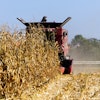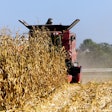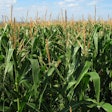
The U.S. Department of Agriculture's Foreign Agricultural Service recently highlighted Ukraine's growing influence in the global soybean market in their August 2024 report. According to their data, Ukraine is expected to export a record 4.3 million tons of soybeans for the 2024/25 season, a significant rise driven by consecutive years of record production. This projection follows a remarkable increase in production from an average of 4.0 million tons between 2018/19 and 2022/23, to an anticipated 6.8 million tons in 2024/25.
The surge in Ukraine's soybean output and exports is attributed to the expansion of arable land dedicated to soybean cultivation, fueled by its higher profitability compared to other crops. This strategic shift has enabled Ukraine to not only meet the rising regional demand but also to cement its position as a critical player in the global soybean market. In 2023/24, Ukraine rose to become the sixth largest global exporter, with significant export volumes directed towards Egypt and the European Union, benefiting from their demand for low-priced, high-quality soybeans.
Additionally, the report discusses Canada's unexpected increase in rapeseed exports, particularly to China, raising the 2023/24 forecast by 500,000 tons to 6.9 million. This boost comes despite a slowdown in domestic crushing activities, as export bids for Canadian rapeseed became more attractive than local processing rates.
Globally, the report forecasts an increase in total oilseeds production for the 2024/25 season, estimating a total output of 690.5 million tons—an uplift attributed to notable increases in soybean and rapeseed production across major producers like the United States, Ukraine, Russia, and India. However, the global vegetable oil trade is expected to dip slightly due to decreased exports of sunflowerseed and palm oil.
These developments reflect a dynamic shift in the global oilseeds market, with major implications for trade flows and market strategies in the coming years. As Ukraine ascends as a leading soybean exporter and Canada continues to capitalize on high rapeseed demand, the global landscape for oilseeds is set to evolve, potentially influencing pricing, trade policies, and international market dynamics.

















